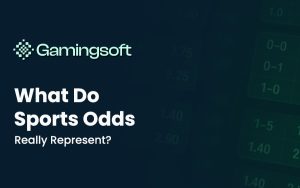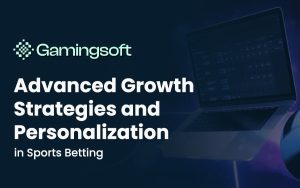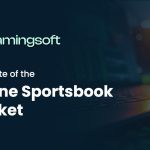The iGaming industry in 2025 has reached an unprecedented level of competition. Every operator wants the same thing — players who deposit, engage, and stay. Yet acquisition costs keep climbing while retention rates are shrinking.
To survive, brands can no longer rely on short-term campaigns or bonus wars. What they need is a scalable player acquisition framework — a repeatable, data-driven model that turns awareness into loyalty.
According to “Analytics and iGaming: Applications of Data in Betting Operations” (Journal of Applied Sport Management), data-centric marketing can reduce acquisition costs by up to 28 % while increasing conversion and lifetime value. In other words, sustainable growth doesn’t come from buying more ads — it comes from engineering smarter systems that connect marketing, analytics, and player behavior.
Modern Player Acquisition Landscape
Player acquisition in iGaming has evolved dramatically. A decade ago, simple CPA deals and banner ads could fill a casino’s funnel. Now, regulatory limits, fragmented audiences, and changing player psychology have reshaped the process.
The study “A Journey From Customer Acquisition to Retention: An Integrative Model for Guiding Future Gaming Marketing Research” shows that the acquisition journey is no longer linear. Modern players move back and forth between stages — from awareness to trial, from churn to re-activation — depending on trust and personalization.
Successful frameworks now emphasize three pillars:
- Behavioral segmentation – grouping users by motivation, device, or engagement level.
- Predictive intelligence – forecasting churn and value before acquisition.
- Retention integration – designing acquisition campaigns that already include re-engagement logic.
In short, acquisition and retention are two sides of the same funnel. Operators who align both see faster payback periods and more predictable ROI. You can explore this connection further in “Player Acquisition vs Retention in iGaming“.
Step 1 – Define Your Acquisition Framework Goals
A scalable framework starts with clarity. Most operators chase metrics like sign-ups or first-time deposits — but those are outputs, not objectives. The real foundation is a measurable structure that links every action to revenue impact.
In “Digital Marketing Frameworks in Gaming Ecosystems” (Munich Social Science Review, Vol. 8), researchers propose using SMART goals — Specific, Measurable, Achievable, Relevant, Time-bound — to build acquisition systems that can scale across markets.
Example KPIs for iGaming frameworks:
- CAC (Customer Acquisition Cost) → Total marketing spend ÷ number of new depositors.
- FTD Conversion Rate → Percentage of sign-ups making their first deposit.
- Activation Rate → Users placing at least one bet or game session.
- LTV Projection → Expected value per player over a defined period.
By anchoring campaigns to these KPIs, teams can evaluate not just volume but value. The same framework also helps coordinate between marketing, analytics, and CRM — turning acquisition into a repeatable process rather than a gamble.
Step 2 – Build Data-Driven Player Segmentation
Traditional demographic targeting — age, region, gender — no longer captures the complexity of digital bettors. Modern frameworks rely on behavioral segmentation, combining real-time data with predictive modeling to identify who is most likely to convert and stay.
Insights from “Analytics and iGaming” emphasize the use of three segmentation layers:
- Acquisition source segmentation: track which traffic channels deliver high-value players.
- Behavioral segmentation: analyze bet frequency, average wager size, and game category preference.
- Lifecycle segmentation: identify users at risk of churn within their first 30 days.
When combined, these signals allow marketers to design campaigns that prioritize quality over quantity. For instance, high-frequency sports bettors might respond better to data-driven odds tips, while casual casino players react to time-limited promotions.
Data-centric segmentation also supports automation: using CRM tools and AI, operators can predict who’s likely to deposit within the first 48 hours and adjust messaging accordingly.
For broader funnel context, see “Effective iGaming Marketing Funnel Strategy“.

Step 4 – Integrate Retention Signals Into Your Acquisition Model
Traditional acquisition ends at registration; modern acquisition begins there. The study A Journey From Customer Acquisition to Retention: An Integrative Model for Guiding Future Gaming Marketing Research emphasizes that acquisition and retention should be strategically unified — with shared KPIs and predictive analytics.
This approach uses retention metrics as early indicators of traffic quality:
- Day 7 Retention Rate → measures if players continue activity after a week.
- Average Session Length → correlates with long-term engagement potential.
- Churn Probability Score → predicts dropout likelihood using early-session data.
By merging these retention signals into your acquisition dashboard, marketing teams can identify which campaigns deliver loyal players instead of bonus hunters.
An ideal framework links bonus utilization, deposit velocity, and engagement frequency — helping allocate budget toward high-value segments. You can explore how this balance works in practice in “Online Casino Bonuses: Balancing Acquisition and Retention“.
Step 5 – Create Scalable Automation Infrastructure
Manual acquisition doesn’t scale. As campaigns multiply across countries, languages, and ad networks, automation becomes the backbone of scalability.
Research from Munich Social Science Review identifies closed-loop marketing systems as one of the most effective growth mechanisms in iGaming. These systems continuously feed performance data — from impressions to deposit — back into AI-driven models to refine targeting in real time.
Here’s how scalable automation works:
- CRM and CDP integration – unify player data from ads, game sessions, and payments.
- AI-based audience modeling – predict future depositors based on behavioral clusters.
- Dynamic ad optimization – adjust creatives automatically based on region or performance.
- Lifecycle automation – trigger personalized emails or push notifications using churn probability.
With automation, acquisition becomes predictable and less resource-heavy.
You can see practical parallels in “Best Acquisition Strategies for Your Sportsbook Business“, where AI-driven targeting significantly improved cost-per-acquisition (CPA) efficiency.
Step 6 – Measure, Analyze, and Refine Continuously
No framework is perfect at launch — it evolves with data. Measurement turns guesswork into intelligence.
Core metrics every operator should track:
- CAC → How much does it cost to acquire a first-time depositor?
- FTD Rate → What percentage of sign-ups convert?
- Activation Rate → How many new users actually place a bet?
- Retention & Churn Rate → Are they staying after 30, 60, or 90 days?
- LTV (Lifetime Value) → What’s the long-term profit per player?
Findings from “Analytics and iGaming: Applications of Data in Betting Operations” confirm that operators with continuous testing cycles outperform others by 35% in campaign efficiency. Their secret: merging marketing feedback loops with machine learning analytics.
A good acquisition framework isn’t static — it’s a living model. Teams that constantly refine targeting, offers, and UX gain a compounding advantage over time.
Drive Acquisition Efficiency with GS Marketing
In the complex world of iGaming, scaling acquisition while maintaining efficiency is no easy task. That’s why GS Marketing from GamingSoft was built — a complete solution that unifies performance marketing, analytics, and automation under one roof.
With GS Marketing, operators can:
- Launch multi-channel campaigns that integrate SEO, paid ads, influencer outreach, and CRM.
- Track player journeys end-to-end, from awareness to deposit to loyalty.
- Automate campaign optimization using real-time analytics and AI recommendations.
Unlike traditional marketing services, GS Marketing connects acquisition and retention in one platform — ensuring no data or opportunity is lost in transition. Whether you’re entering a new market or scaling globally, the framework helps you do it faster, smarter, and with measurable ROI.
Conclusion
A scalable player acquisition framework is not built overnight — it’s engineered through alignment, analytics, and adaptation. The most successful iGaming brands in 2025 aren’t those spending the most on ads; they’re the ones who transform marketing data into business intelligence.
When acquisition, automation, and retention become part of the same system, every dollar spent creates value beyond the first deposit.
In the end, growth isn’t about how many players you reach — it’s about how many you truly understand.
FAQs About Player Acquisition Framework in iGaming
-
What’s the difference between a player acquisition strategy and a player acquisition framework?
A strategy focuses on short-term campaigns or tactics to attract new users. A framework, on the other hand, defines the long-term structure — including data systems, automation, and KPIs — that make acquisition repeatable and scalable across markets.
-
How does machine learning improve player acquisition efficiency?
Machine learning models analyze past player behavior to predict which new users are most likely to deposit, churn, or stay. This allows operators to optimize ad targeting, bonuses, and onboarding flows dynamically — cutting down acquisition costs while increasing conversion rates.
-
What’s the ideal timeframe for testing and refining a player acquisition framework?
Most operators run a full evaluation every 90 days, aligning it with campaign and seasonal cycles. This interval allows enough time for data accumulation and ensures continuous improvement without disrupting active marketing activities.
-
Can small or mid-size iGaming operators implement such a framework without enterprise-level tools?
Absolutely. Smaller operators can start with accessible CRM systems, analytics dashboards, and segmented email automation. The key is not the tool size, but the structure and consistency in how data is collected, analyzed, and applied across campaigns.
-
How do compliance and data privacy laws impact player acquisition frameworks?
Regulations like GDPR and PAGCOR licensing rules require that player data collection, segmentation, and communication follow consent-based standards. A strong acquisition framework includes compliance checkpoints — ensuring every automation, email, or ad retargeting respects user privacy and regional laws.






